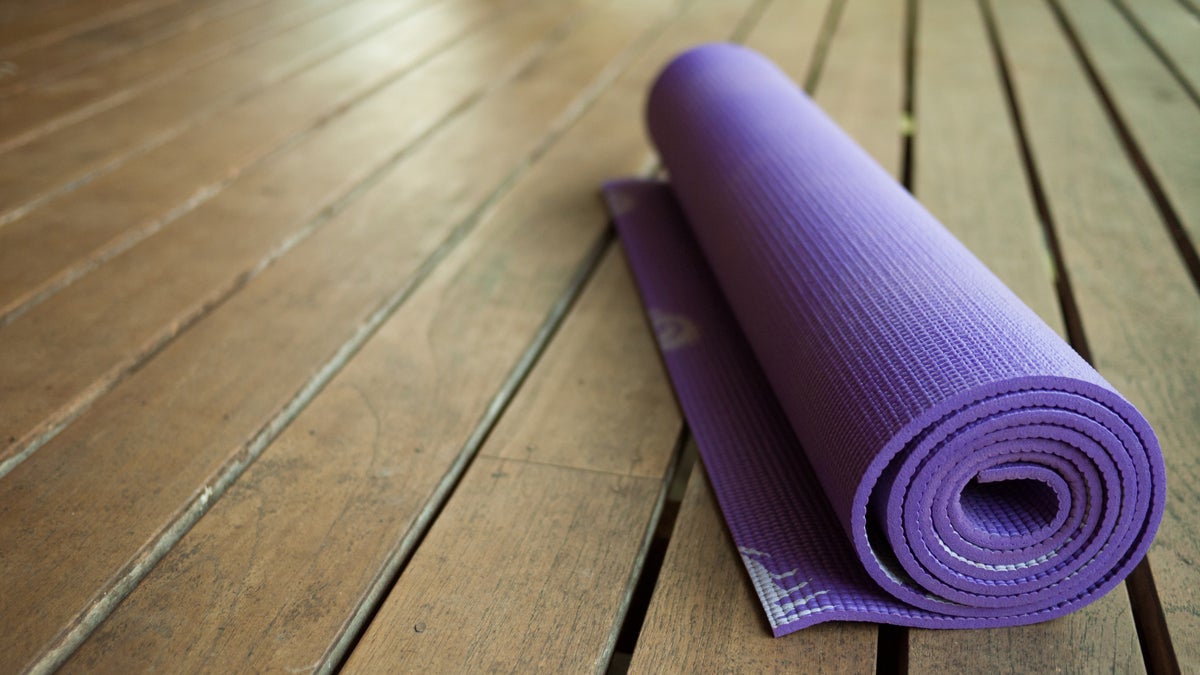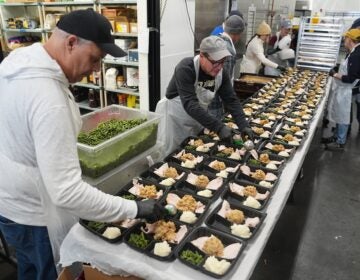Finding the space to connect voice, body and spirit on a yoga mat

(Yoga mat image courtesy of Shutterstock.com
Yoga practitioner and educator Pam Paraison’s transformational professional journey is the very model of “paying it forward.” She says, “Being connected to where you are isn’t the same thing as dressing up with a happy face, but it’s about being willing to be whole-hearted and raw.”
Speaking of turning your learning into teaching …
Pam Paraison‘s transformational professional journey is the very model of taking what helps oneself and turning it around to help others.
Paraison is a yoga practitioner and educator. Her projects — including Moksha, a women’s group that combines yoga, leadership and mindfulness; and Alcanzar (“to reach”), incorporating yoga into teaching English as a second language — focus on creating a safe space for people to connect body, voice and spirituality. But not long ago, she didn’t even feel able to create that for herself.
Remembering the time just after she graduated from college, Paraison says, “I didn’t feel like I belonged to myself. I was angry toward outside circumstances and silenced my voice, because I didn’t know how to use it in a way that would help me or anyone else. … It went on for at least four years, where I was going in an inward and downward spiral toward depression, because I didn’t use my voice or my body. It became complete isolation.”
When I asked what turned that around, Paraison remembers a palpable moment and a yoga mat.
Connecting the pieces
“When I turned 29, my sister gave me a yoga mat, and we went to a class at the gym,” she says. “At first I couldn’t do anything at all in the yoga practice. I had let myself go. My inner strength and outer strength were not there.”
Many people would have just walked away, but the time she spent on that mat gave Paraison the space to begin connecting up the pieces of herself that had felt so alienated from each other — and from her body.
“I went to several classes at the gym, but realized I needed more help,” she says. “So I found a psychologist who also happened to be a Kundalini yoga teacher. I began an eight-week course with her, and it connected me with my body, voice, and outside world in a way I’d been disconnected from. Then I found a yoga community at Dhyana Yoga Studios in Philadelphia.”
I can relate to this. My own yoga practice has been transformative for me and continues to be a core spiritual practice — but it would never occur to me to try to teach it. When I asked her about that leap, she laughed.
“I was working at the front desk in exchange for classes. I would be sitting there eating potato chips and reading books, and all of a sudden I saw myself surrounded by beautiful yogis and teachers. I was thinking about training to teach later in the year, but early on my teacher said, ‘You can do this now!’ And I said, ‘Yes!'”
Doors open, doors close
Turns out her teacher was right. The training program, Paraison says, let her own the pieces of herself that she didn’t like and to see the things in her life that were working. She began teaching in August, and she’s now teaching at seven sites.
Paraison says nothing in her life had worked out that way before. Doors had never opened so naturally, though she had gotten there just as much because of other doors closing.
“It was one of the first times I asked for real help from my family and friends,” she said. “If you’re doing something alone, it means you’re not doing it right. You need other people to bring you along.”
Looking at her projects — empowering women as well as men, and helping to enable the voices of those who feel voiceless — it’s clear she has “paid it forward” and brought people along for their sake.
“I see the bigger picture in how I can help people walking a similar path to what I walked,” Paraison says. “I encourage them to step on the mat and find their own voices, whatever that means to them.”
As will often happen, Paraison went on to cite an influence whom I knew and whose appearance on American Public Media’s “On Being” had recently popped up for me: Brené Brown, whose book, “The Gifts of Imperfection,” had motivated Paraison from the first reading and whose image of a whole-hearted revolution had shaped Paraison’s work.
“Being connected to where you are isn’t the same thing as dressing up with a happy face,” Paraison says, “but it’s about being willing to be whole-hearted and raw. We humans strive to be heard, seen and connected. So I help to create spaces where people can feel seen, heard and valued.”
WHYY is your source for fact-based, in-depth journalism and information. As a nonprofit organization, we rely on financial support from readers like you. Please give today.




